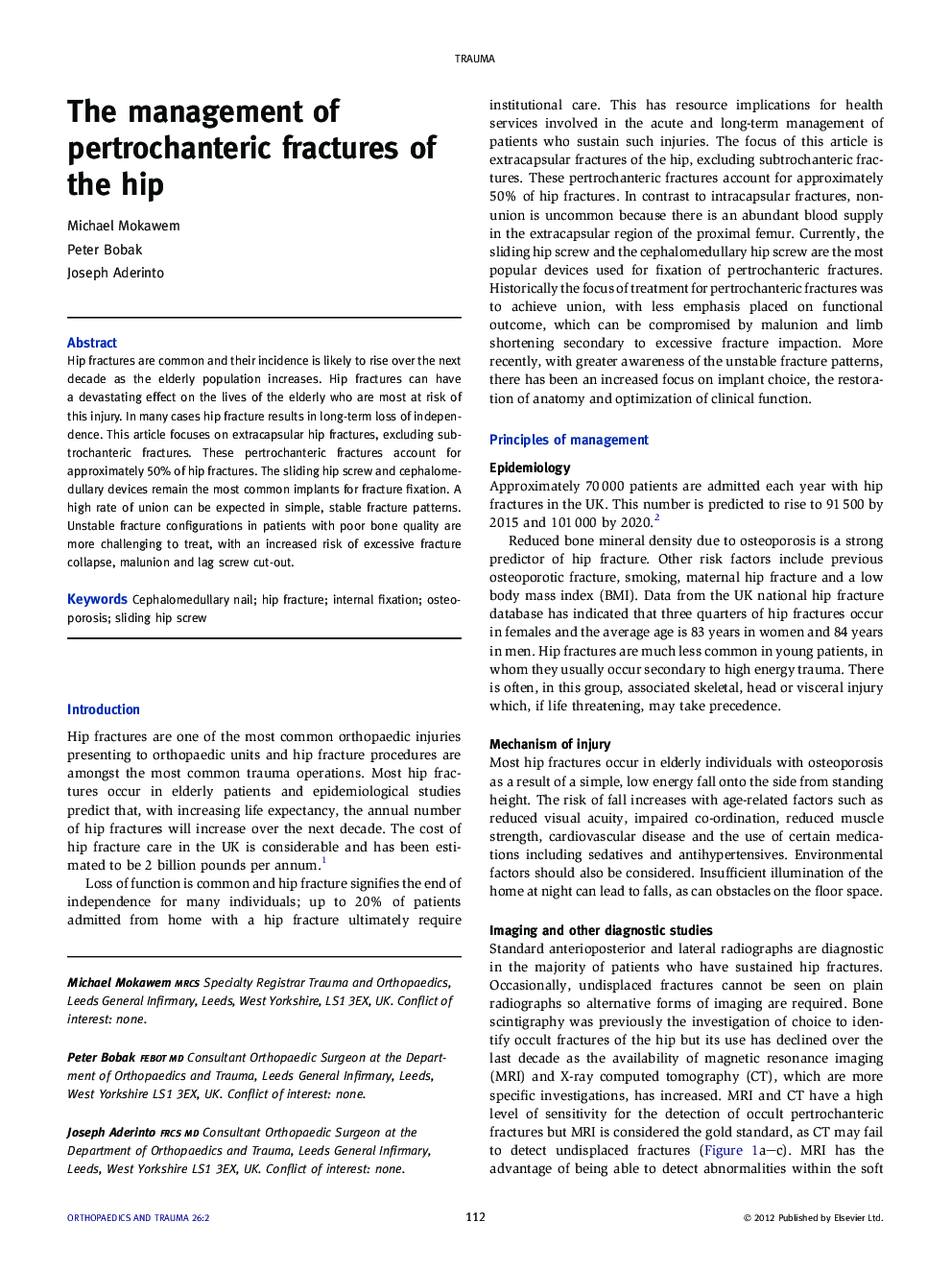| Article ID | Journal | Published Year | Pages | File Type |
|---|---|---|---|---|
| 4080264 | Orthopaedics and Trauma | 2012 | 12 Pages |
Abstract
Hip fractures are common and their incidence is likely to rise over the next decade as the elderly population increases. Hip fractures can have a devastating effect on the lives of the elderly who are most at risk of this injury. In many cases hip fracture results in long-term loss of independence. This article focuses on extracapsular hip fractures, excluding subtrochanteric fractures. These pertrochanteric fractures account for approximately 50% of hip fractures. The sliding hip screw and cephalomedullary devices remain the most common implants for fracture fixation. A high rate of union can be expected in simple, stable fracture patterns. Unstable fracture configurations in patients with poor bone quality are more challenging to treat, with an increased risk of excessive fracture collapse, malunion and lag screw cut-out.
Related Topics
Health Sciences
Medicine and Dentistry
Orthopedics, Sports Medicine and Rehabilitation
Authors
Michael Mokawem, Peter Bobak, Joseph Aderinto,
